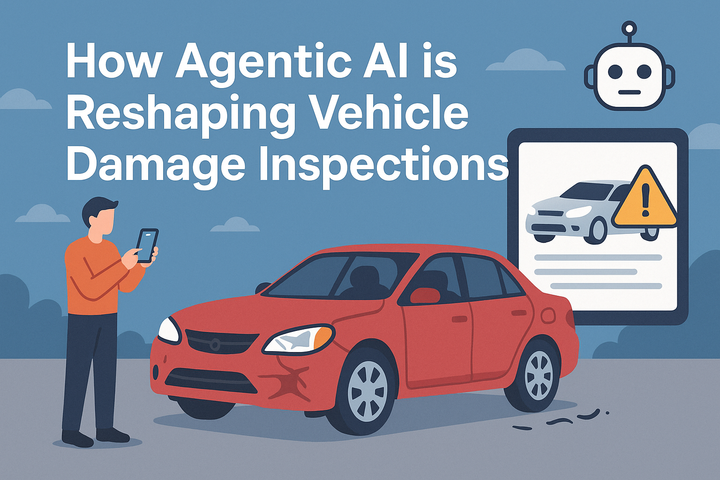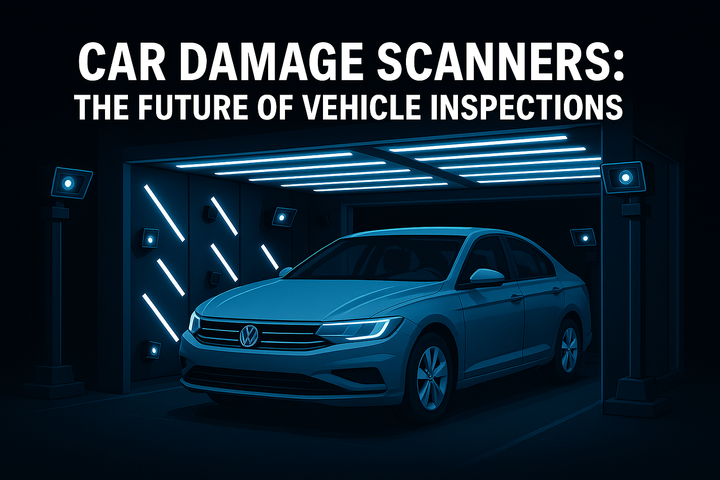6 Cost-Saving Measures for the Automotive Industry | Inspektlabs
There are several measures that the automotive industry can adopt to cut costs. Most of these measures involve incorporating new-age digital technologies. With the fast-paced growth of the automotive industry, there has never been a greater need to adapt digitally.

While manufacturers strive to lower unit costs, many factors determine the overall cost of their products, including design and specifications. More than two-thirds of the price of a new product depends on its design and specifications.
Manufacturers can identify the essential features and reduce unnecessary components by redefining the product. At the same time, they can offer consumers the features they want at competitive prices. Here are some cost-saving measures for the automotive industry.
1. Telematics

There are many benefits to telematics, but despite the initial expense, the cost savings far outweigh the initial outlay. Fleet managers can program service calls, find the most efficient routes and improve vehicle wear and tear.
Fleet managers also gain access to information they don't have now. This information can help them reduce their overhead costs.
The telematics control unit is fitted as a device inside a vehicle. The unit transmits the data to a central server via a cellular or LTE network. The information remains on a central server where it can be used by various parties, including the fleet management companies.
The telematics system also allows insurers to estimate damages and reduce fraud. Telematics can also help in tracking stolen vehicles and improve driver safety.
Fleet management software helps fleet managers to rank drivers by their safety scores. They can then coach their drivers to adopt safer driving habits. Modern telematics systems even include dashcams to record incidents during a driver's journey.
Dashcam footage can support coaching sessions and even help in legal proceedings. These elements can also help disprove fraudulent claims made in court or through insurance.
While telematics has been present in the automotive industry for a few decades, it remained largely untapped due to high investment costs and a lack of consumer demand.
However, with the increase in vehicle connectivity and smartphone integration, telematics has received a fresh lease. With these capabilities, telematics in the automotive sector reduces costs while improving safety and efficiency.
2. Design-Driven Cost Reduction

In the automotive industry, cost reduction has become an overall operational strategy. The problem is that companies are under tremendous pressure to meet consumer demands without increasing costs. Suppliers are struggling to stay afloat while squeezing car makers for profits.
Carmakers can achieve additional savings by identifying and implementing design-driven cost reduction measures. Ultimately, the savings will be felt by consumers and allow the automotive industry to maintain its competitiveness in a rapidly changing world.
By using design-driven cost reduction measures, manufacturers can identify critical features of their cars that consumers value and cut out costly waste. Ultimately, these cost-cutting measures will result in lower unit costs for consumers and a quicker time to market.

Frugal engineering can effectively reduce costs and is perfect for growth platforms in emerging markets. Frugal engineering can also apply to various non-differentiating parts, such as the glove box and rearview mirror.
In addition, it infuses collaboration and flexibility into the implementation process. Finally, it holds engineers accountable for cost-cutting proposals and sets a timetable for action.
3. AI in the Automotive Industry

AI has been gaining traction in the automotive industry, and this technology has several exciting uses. In addition to reducing manufacturing costs, AI can increase production and efficiency. The benefits of AI in the automotive industry are numerous and will help the industry to transition to the next level.
Automakers are constantly trying to keep pace with the latest technologies and reduce costs. High-performance computing (HPC) systems and AI are two areas in which the automotive industry invests heavily. For many years, automakers have focused on HPC systems, but with the rise of autonomous vehicles, their focus has expanded to AI.
In addition to helping manufacturers develop safer cars, AI can also help the insurance industry improve claims processes by predicting risks and reducing the cost of insurance.
For example, AI can use big data to build risk profiles for drivers based on driving behaviors and other factors. The data can provide detailed insights on drivers, like their average speed, number of sharp turns, and even their level of drowsiness. Vehicle damage detection using AI is another excellent application of this technology.
Increasing amounts of data are available to automakers, which means they can use that data to tailor the user experience. Personalized and proactive maintenance are two essential benefits of AI.
Once a car is connected, it will send data to insurance companies, advertisers, and manufacturers. These advanced capabilities will force automakers to embrace AI and machine learning in their processes to reduce costs and increase profitability.
Autonomous cars and other connected vehicles are just a few examples of how AI is changing the automotive industry. With AI powering these safety features, cars can possess advanced driver-assist features like blind spot monitoring and emergency braking. They can also plan routes using LIDAR.
Vehicles contain thousands of parts, and inventory management is complex. AI applications help manufacturers plan their marketing strategies and limit production to ensure a low cost. Moreover, AI helps determine the optimal price of a vehicle.
While AI can improve process optimization and efficiency, there are several challenges associated with its implementation. AI cannot recognize things without extensive training.
Additionally, it is vulnerable to being corrupted, fooled, or failed in unexpected ways. As such, automakers must exercise caution. In other words, automakers should take their time before implementing AI in their manufacturing processes. The automotive industry must navigate these issues as it continues to develop AI.
4. Vehicle Inspection Automation

The benefits of automated vehicle inspection are numerous. Automated vehicle inspections can bring down inspection costs exponentially. Currently, humans have to inspect thousands of vehicles a day manually.
Humans are not the most efficient at vehicle damage detection, so using AI for car damage assessment can drastically cut the cost of this task. The technology can also increase the accuracy of damage recognition and reduce the unit cost of the evaluation.
With AI vehicle damage inspection, car inspection businesses can offer consumers value-added services like auto repair and reconditioning. AI for vehicle inspection is becoming more popular, and automakers realize the benefits.

Artificial intelligence helps inspect vehicles to find damage. Some systems use machine learning to compare vehicle pictures at different points in time, detecting additional damage.
Others use VIN, number plate, and other information from the car's papers or odometer to determine the vehicle's exact condition. Differentiating factors include the system's ability to integrate into a customer's existing systems.
AI damage detection can be an excellent tool for vehicle manufacturers, resellers, renters, and insurers. One significant benefit of this technology is its ability to identify specifications errors during the assembly process.
Faulty components or parts could be recognized in a matter of seconds, allowing for rework before the vehicle leaves the factory. Ultimately, this means vehicle owners can drive their cars without fear of damage or safety hazards.
AI for vehicle inspection allows the automation of manual processes by automating the visual process. For example, Inspektlabs' AI can automatically detect even the slightest damage.
A report generated by the system takes just a few seconds and uses AI and machine learning to deliver reliable evaluations. This damage assessment automation with AI technology is gaining significant interest in the automotive industry.
5. Adhering to Regulations

The role of AI in the automotive industry is increasingly crucial as manufacturers look to improve their bottom line. To do so, automakers need to leverage ever-more-granular data about drivers, parts, and other characteristics of vehicles.
Machine learning, a subset of data science, enables automakers to develop flexible demand planning strategies, which improve efficiency and lower costs. However, regulations must remain in place to protect consumer safety and privacy.
Regulation of AI should promote innovation and consumer confidence while avoiding a bloated and overly burdensome regulatory environment. The automotive industry already undergoes stringent ex-ante safety and conformity controls.
Failure to comply with rules will lead to lawsuits and other financially draining complications. If businesses invest in ensuring compliance ahead of time, they will not have to pay excessive penalties in case of violations.
6. Training Staff

The automotive industry is undergoing dramatic changes with the introduction of advanced robotics, new manufacturing technologies, and stricter safety and environmental regulations.
From new product development to compliance with highly regulated industry laws, the automotive workforce has become global, creating a growing need for training and education. Investing in training staff gives great returns because it is a one-time investment.
Training staff is integral to a customer-centric approach, as soft skills can differentiate between a satisfied and unsatisfied customer.
The automotive industry is vast and therefore affords these measures to ensure that employees have the skill sets to provide quality customer service. Organizations can quickly fall behind without adequate training solutions and lose market share.
Conclusion
There are several measures that the automotive industry can adopt to cut costs. Most of these measures involve incorporating new-age digital technologies. With the fast-paced growth of the automotive industry, there has never been a greater need to adapt digitally.



